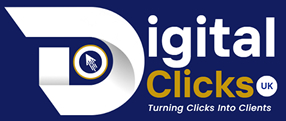On-Page Search Engine Positioning Improvement, Best Practices for 2024

Introduction
In today’s digital age, the Internet industry is fiercely competitive. Everyone wants to always see their business website on the first page of Google. So they use different methods. The traditional way to make your website visible on the Google Rank Page is to create a beautiful website page that attracts visitors.
Search engine positioning covers all the techniques that can be used directly within a site to increase its position in search engine rankings. This includes optimising content, optimising HTML codes and enhancing user interaction.
If you are a website developer and are searching for tools that rank your website then this article has many informative tips for you.
Quality of content
High-quality content is important for website development. Your content should be both relevant and useful, adding value to readers by answering their questions and solving their problems. Make sure it is well written, free of grammatical errors and easy to read.
When creating unique and creative content, always aim for originality while avoiding copycat content.
Better use of keywords
Start with research to determine what your audience wants. Toos like Google’s Keyword Planner, Ahrafz and SEMrush are useful in helping you identify the exact keywords that you should target people are searching in the search engine.
After defining your keyword, insert it into your title, header and written content. This enables engines to get a literal sense of your content without burdening them with high keyword density. Include both LSI keywords and phrases that provide background to the content.
Appropriate headings and title
- Use sentence capitals instead of title capitals for titles and headings. This makes them easy to understand.
- Simplicity should be the order of the day, eliminating the use of unnecessary words. Long headlines don’t work.
- Include important keywords that will be useful for SEO but don’t over-emphasize it.
- Provide information simply and effectively to capture the reader’s attention.
- Deal with order-matching styles and layouts at the website level.
- However, make sure that each page provides a unique H1 heading that is also valid for its title.
- Avoid links in the headline as much as possible as readers may be misled.
Structure of URL
Your URL should be easily understandable with few words to attract the visitor. As for web addresses, they should be easy to use and efficient making them short and keyword-rich. Since the URL is an essential component that people will type to visit the site, a simple and short address should be chosen.
A URL or Uniform Resource Locator is a resource identifier across the Internet. For its easy readability, do not use numbers or special characters in the string. An accessible URL is easier to understand and easier for search engines to estimate a more specific traffic rate.
Proper picture size
Images can improve the appearance of your material but if not properly prepared, they might cause your website to load slowly. Here are some suggestions to help you accomplish that:
First, apply “Alt Text” for your photos. This involves using words to describe the image and explain what it contains. This helps search engines understand what the image depicts.
Second, ensure that the picture files are not too large. This is referred to as the “file size.” You may reduce images to keep them appearing excellent while also making them load quicker. Also, give your image files descriptive names. This also benefits search engines. Try to use phrases that describe the picture accurately.
Mobile friendly website
To ensure that your website works properly on phones and tablets, it must be user-friendly on smaller displays. This means that when someone views your website on a mobile device, it must adjust properly to fit their screen. Additionally, your website should load quickly.
You can achieve this by making sure your source code is efficient, reducing the size of your images without sacrificing quality and adding browser cache names to store sections of your site. You can use go techniques so that they load faster when someone arrives.
Page loading speed
A slow-loading webpage can irritate users and reduce your site’s ranking in search results. To speed things up, make sure your code is optimised.
Another trick is that you use a network for the delivery of content. This distributes the site’s files across multiple servers globally. allowing people to access them from the servers closer to them, resulting in quicker loading times.
Enable browser caching to temporarily save some sections of your webpage in the browsers of your customers. This way, when people return to your site, it will load faster because their browsers already saved certain elements.
These actions can assist keep your users pleased and increase your site’s visibility.
Internal links creation
These are onsite links that direct the reader to other websites on your website. Not only should your page have internal links but it should also link to other sites on your site.
In any case, the link title must be specific to the page you are linking to and must include the target term. Not only does this improve the user experience but the more connections to your page that use that term as link text the higher your chances of ranking.
Conclusion
Onsite SEO is an important step to improve your internet site ranking and increase the number of site visitors. Paying more attention to the quality of the content, making the content as applicable to the audience as possible and using key phrases regularly.
Equip factors like web page loading speed and compatibility with mobile gadgets for better search engine results. Clean URLs, accurate titles and internal linking help improve UX and search engine optimization elements.
As a result, the defined sports will assist advantage the aim of enhancing organic visibility, growing website online traffic, sharing applicable content and promoting its boom in the long run.

